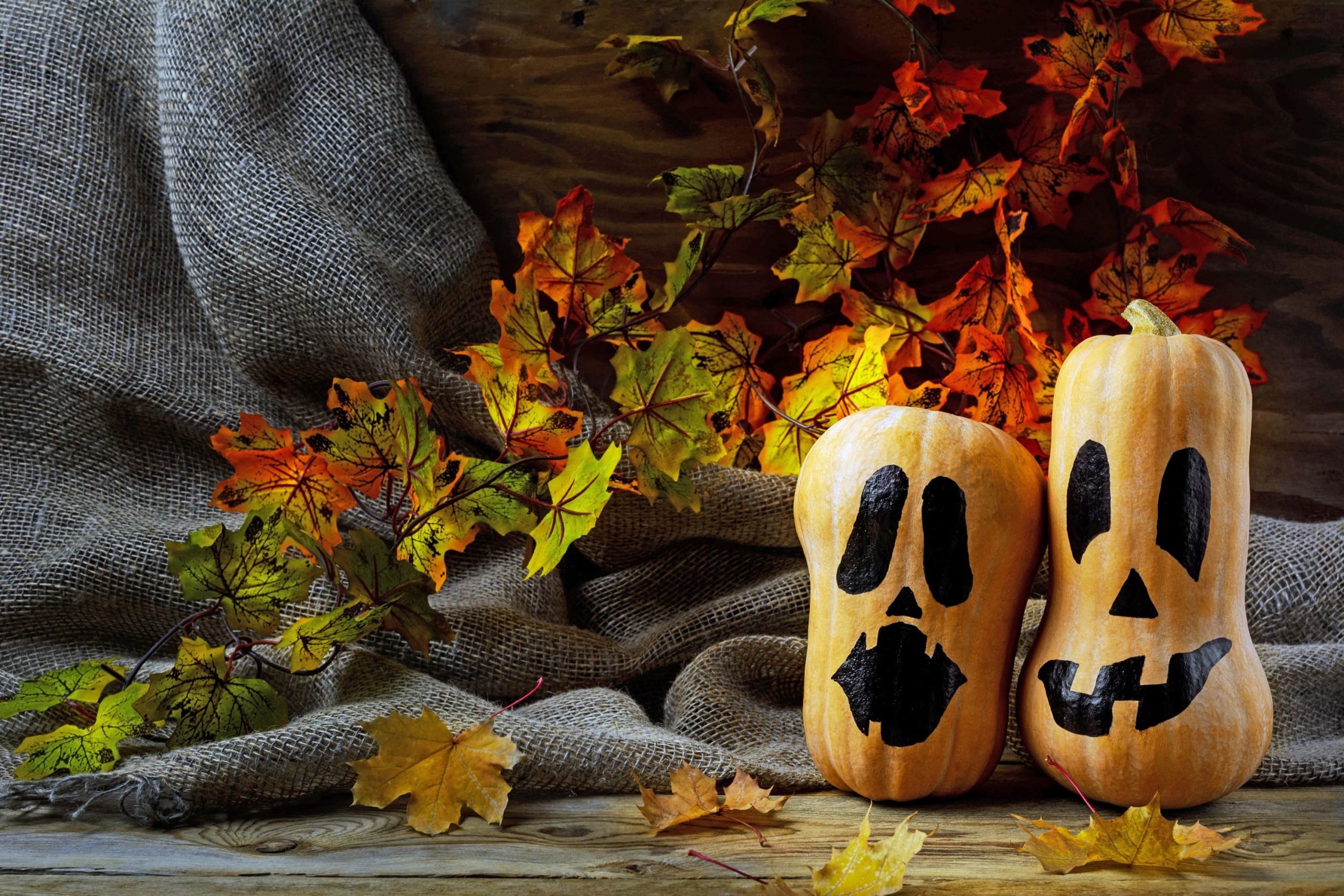How to make a spooky Halloween display with homegrown fruit and veg
If you can’t bag a pumpkin, then scary swedes, terrifying turnips and sinister spuds will suffice
If your efforts to grow a Halloween pumpkin have been a nightmare this year because of the summer drought, fear not as there are other fruit and veg you may have harvested which can add magic to your scary display…
Turnips
Happy Halloween!Which do you prefer? The carved turnip or the carved pumpkin?Turnips were used as lanterns in the 19th century in many parts of the UK and Ireland at Halloween. #carvedturnip #carvedpumpkin #halloweenturnip #halloweenpumpkin #glutenfreevegan #vegan pic.twitter.com/VeX5C4MYn0
— FriFran: GF Vegan Allium-Free Coconut-Free + More (@hellofrifran) October 31, 2018
Before pumpkins became synonymous with Halloween, people across the British Isles carved scary faces into turnips and placed them near doorways to frighten away evil spirits, according to the charity English Heritage.
The custom originated from a folk tale about a man named Jack who, after trying to trick the devil, was cursed to roam the earth with a burning coal inside a hollowed-out turnip to light the way – the original Jack-o’-lantern.
Immigrants to the US adopted the tradition in the 19th century, discovering that pumpkins, a native American fruit, were much easier to carve.
Turnips sown under cover can be harvested in October and November, are easy to grow, and don’t need much time or effort because they will largely look after themselves – although you need to water them regularly and keep them well-weeded.
Swedes
View this post on Instagram
Often mashed with carrot or potato as a winter warmer, swedes can also be carved into sinister faces for Halloween.
They are similarly easy to grow, if you sow them in late May or early June in an open spot in full sun. The roots can be harvested from autumn as you need them, or lifted and stored in boxes of sand in a cool, frost-free place until required.
Butternut squash
View this post on Instagram
They’re from the same family as the pumpkin, and if you’ve grown a crop which has matured well it’s pretty easy to cut the lid off, scoop out the flesh and carve them into Jack-o’-lanterns.
Butternut squash can be sown indoors in spring and planted out when all risk of frost has passed, but they’ll need plenty of room – about 90 centimetres between plants – and you may just get two or three fruits per plant. For best results plant in rich soil, using a well-composted area and you should be harvesting in October. The fruit is sweet and excellent for roasting, so certainly not just for Halloween.
Onions
View this post on Instagram
They may seem like a very poor substitute for majestic orange pumpkins, but if you have plenty of spare onions – most types can be stored to use from September to February – then have a go at decorating them with ghostly faces and add them to your indoor Halloween decorations. Once Halloween is over, you can peel off the faces and use them in cooking.
Onions are super easy to grow from sets (small bulbs) – plant them in March and April 10 centimetres apart, allowing 15 centimetres between rows, water during dry spells and keep the area well weeded, so you’ll be harvesting in August and September.
Apples

If your trees are heaving with apples or you have enough stored in a cool shed to keep you going all winter, you may want to use some of the crop to make tasty treats for the grandchildren indoors. Create spooky teeth using slices of apple – children will love it.
Apple trees are an ideal addition to any garden – you can grow some in containers, and train others against walls. Not only do they give you delicious fruit, but the spring blossom looks fantastic in shades of pink and white.
Potatoes

The humble spud may not look sinister enough for a carved face, but once cooked it can take on a creepy air. If you carve eyes and mouths into a selection of jacket potatoes and put them in the oven for an hour, they’ll come out with scary shrunken heads, adding spookiness to any table.
Maincrop types are probably best for Halloween, as you can harvest them from September to November. Plant maincrop seed potatoes in April about 38 centimetres apart, hoe shallowly to keep weeds at bay, and as the potato shoots grow, earth up the plants, pulling up soil into ridges along the rows to reach about half the height of the emerging shoots.
In the autumn, dig each plant up individually, going deep but carefully into the soil to loosen the potatoes underneath. Some of the potatoes should come out with the roots of the plant.
The Press Association
Latest posts by The Press Association (see all)
- In Pictures: Party stalwart kept New Labour in touch with traditional supporters - November 21, 2024
- 6 easy indoor exercises to try this winter – and why they are good for you - November 19, 2024
- Martin Clunes: I can’t afford to retire – I’ve got too many horses - November 19, 2024
- How to avoid plant losses, flowering disappointments and container catastrophes - November 17, 2024
- John Lewis Christmas ad stars sister in last-minute dash back in time - November 14, 2024





















